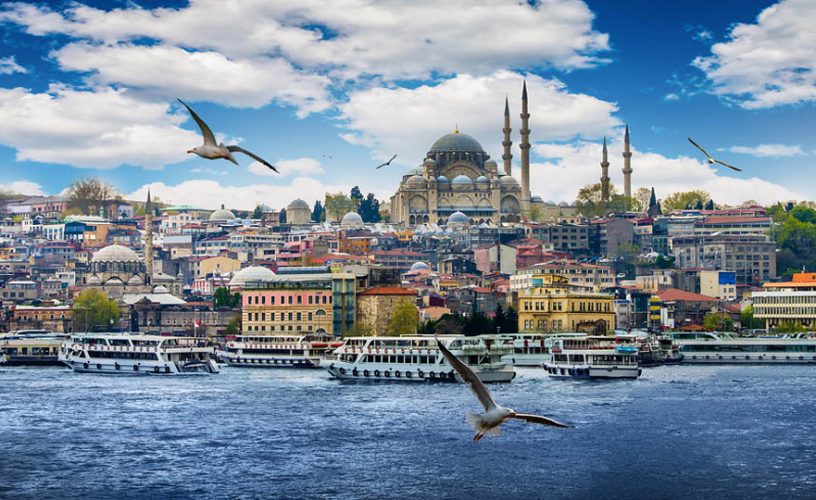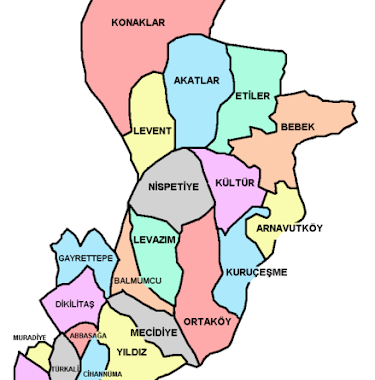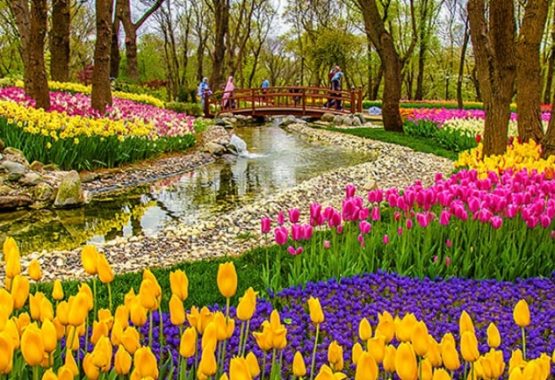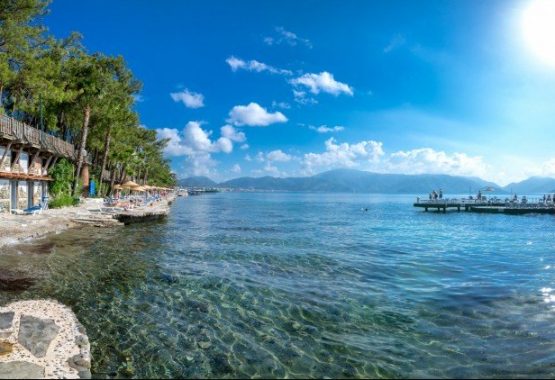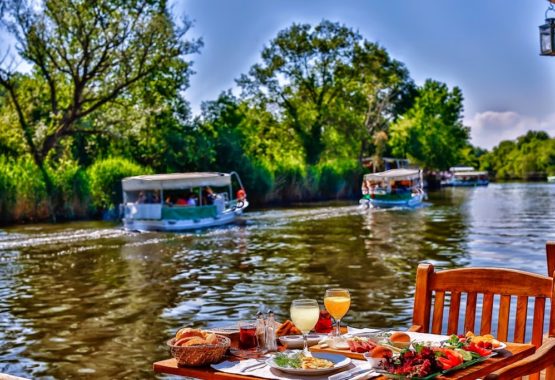Straddling the continents of both Asia and Europe, Istanbul is an exotic city like no other. Here, extraordinary cultural experiences await around every corner and this Istanbul itinerary will help you to discover the best that the city has to offer within a short space of time.
Formerly known as Constantinople and Byzantium, Istanbul is the largest city in Turkey. It has a history dating back over 8000 years and has hosted some of the greatest civilisations of the human race. The Byzantines constructed intricate palaces and churches in Istanbul and adorned them with vividly coloured mosaics and frescoes, while the Ottomans crafted beautiful imperial mosques with stunning minarets that reached out to the skies. The combination of the two influences have created one of the world’s most unique and beautiful skylines.
Travelling through Istanbul means wandering through the narrow passageways of labyrinth style souks, past fragrant spice stalls, colourful markets and quaint tea rooms selling kucuk cay. Whether you are a history buff, a culture vulture, or you just want to roam around a new city, Istanbul has a little something for everyone.
Truth be told, four days is not enough to even scratch the surface of this huge megalopolis, but for a first time introduction, it’s a nice starting point. Istanbul makes a nice alternative city break but is best enjoyed as part of a wider Turkey itinerary.
The Historic Sultanahmet District
The breathtaking blue mosque is one of Istanbul’s main tourist attractions and it is important to get here as early as you can if you want to avoid the crowds and have less than approximately 496,458 people in the background of your photos. Anything before 9am is preferable. The mosque, named Sultanahmet Camii in Turkish was awarded its title on account of the beautiful delicate blue tiles that decorate its interior.
Tips for Visiting the Blue Mosque
It’s important to dress modestly when visiting Istanbul mosques. This means covering your shoulders and knees, and women should cover their hair. Free scarves can be borrowed at the entrance to the mosque grounds. Shoes must be taken off to go into the mosque interiors. When approaching the blue mosque, ignore all of the toots that tell you that they will help you to skip the line. They will only try and take you to their bazaar or sell you something. Follow the standard entrance. The blue mosque is free to enter.
The marvellous Hagia Sophia
The marvellous Hagia Sophia is located directly across the courtyard from the entrance to the Blue Mosque. Once a Byzantine church and then an Ottoman mosque, the site has now been renovated into a museum containing various artifacts that depict Istanbul’s rich and diverse history. The original building was built all the way back in the year 337, and started operating as a place of religious worship in 537.
At one point, the Hagia Sophia was the largest building in the world. Many remnants from the building’s former religious functions still remain – including elaborate, colourful stained glass windows from its time as a church, and ornate, inscribed minarets and domes from its time as a mosque. If there was a “must visit” during your Istanbul itinerary, visiting the Hagia Sophia would be it. Admission to the complex costs £9/$11.
The Obelisk at Sultanahmet Square
During the times when Istanbul was Constantinople, the Sultanahmet square was the main place for events and gatherings. Chariot races were even conducted here and crumbling walls outline what remains of the 2000 year old hippodrome. Don’t miss the serpent’s column, the obelisk of Thutmose III and the German fountain. The Obelisk was originally constructed in Luxor but looted and moved to Istanbul (then Constantinople) in 390. It is said that the towering obelisk that remains today is actually only ⅓ of its original height!
Submerge into the Eerie Atmosphere of the Basilica Cistern
Istanbul’s eerie Basilica Cistern leads travellers deep underground, to what feels like another city entirely. The cistern was constructed by the Byzantines in 532 and gained its name as a result of its location – originally beneath the Stoa Basilica. It was used to service the great palaces and religious buildings throughout the city but after the Byzantine Emperors relocated, it was abandoned and forgotten. That is, until the 15th century when the Ottomans rediscovered it and used it as a dumping ground for bodies and other gruesome garbage.
Today, the Basilica Cistern is one of Istanbul’s main tourist attractions and provides a fascinating glimpse into the city’s history. During your descent down there, be sure to check out the creepy stone medusa heads that support some of the cistern pillars. Nobody is quite sure how they got there.
Browse Eccentric Exhibits at Topkapi Palace
Sultans and royalty. Exuding grandeur and elegance, the castle today is incredibly well preserved and operates like a “living museum” with its various rooms and annexes still displaying the rich tapestries, elaborate art work and decadent furnishings that were enjoyed and used by Ottoman rulers.
A fascinating section of Topkapi Palace that should not be missed is the harem – the quarters where the wives of the Sultans lived, along with their mothers and concubines. In the treasury, the exhibition halls contain holy relics such as the footprint of Prophet Mohammed and the Staff of Moses. Whether these relics are genuine or not is debatable, but since they were awarded as gifts to the Sultans, they are worth a visit nonetheless.
Wander Through the Bustling Souks of Istanbul
The Grand Bazaar may be a little touristic and inauthentic as far as Turkish markets go, but it is well worth a visit during your Istanbul itinerary. Virtually every item imaginable can be purchased here – from intricately woven Turkish carpets, scarves, and tapestries, to colourful Arabian lanterns and sticky sweet trays of baklava. What makes Istanbul’s Grand Bazaar special is its layout.
Dating back to the 1400s, the Grand Bazaar remains to this day, the largest covered market in the world. It contains thousands of stores and tea rooms tucked away across over 60 passageways. Be expected to haggle while shopping here. To be honest, if you are looking to buy clothing and souvenirs, I would generally recommend waiting until you are in a less touristic area but that is up to you.
It is customary for Turkish store owners to invite you in for a cup of apple tea as you shop. You are not obligated to buy anything if you accept, however it sometimes causes more pressure to buy.
Close to the Grand Bazaar, follow the pathways towards the Istanbul Spice Market. The colourful stalls here with their mounds of spices, dates, and nuts presenting every colour of the rainbow are incredibly photogenic, but also create an excellent opportunity for edible window shopping. Sample dried and candied dates, and a diverse range of flavours of Turkish delight .
Check out the Istanbul Archeology Museum
This is overlooked on many people’s Istanbul itineraries, however, it contains a collection of some of the most important classical artifacts of European history, including the sarcophagus of Alexander the Great himself!
Ascend Galata Tower for a Birds Eye View of Istanbul
Situated across the river from the Sultanahmet district of Istanbul, Galata tower is the place to go to enjoy breathtaking views of Istanbul. The 13th century stone tower looks like a princess turret straight out of a fairytale and standing at 54 feet high, it is visible from most parts of the city. Ascend the tower for a magnificent viewing point from which you can glance across to the Blue Mosque, the Topkapi Palace, and the Hagia Sophia.
The Galata tower almost always has a long queue outside it regardless of when you go. The viewing platform inside is small but to be honest, the queue tends to move relatively quickly. The cobbled streets of the quaint neighbourhood surrounding Galata tower are well worth exploring and are filled with cute coffee shops, vintage clothing stores, and antique sellers. Some of the places here are adorable and it’s like you are just sitting sipping tea in someone’s living room.
From Galata tower, follow Istiklal street down to Taksim square. Istiklal street is essentially Istanbul’s answer to the high street and is filled with everything from boutique stores to branches of international brands. At the end of the street awaits Taksim square – essentially the heart of modern Istanbul. Grab an islak burger from one of the many street food vendors while you are in the area. Islak burgers are a Turkish street food delicacy that are found only in Istanbul.
Take a Bosphorus Cruise
Enjoy all the seesights while you are sailing between Europe and Asia, passing under the suspension bridges and admiring Ottoman summer palaces, waterside mansions and modern villas…
The Turkish Night Cruise on Bosphorus is a unique experience which you should not miss!Get amazed by the bright stars of this great city… Dance with the rythm of the music… Enjoy your dinner with your loved ones…
Let the professionals entertain you on this Turkish Night on Bosphorus
A Slice of Peace and Tranquility at the Princes Islands
A pleasant contrast to the constant hubbub and traffic-jammed streets of Istanbul is the peace, tranquility, and luscious greenery that awaits in the nearby Princes Islands. The Princes Islands are an archipelago of islands in the sea of Marmara. They can be reached within an hour’s boat ride from Istanbul’s Kadikoy port.
Head to Kadikoy early in the morning to take one of the early ferries that depart Istanbul for Buyukada – the largest of the Princes Islands. As your boat pulls off from the jetty, you can enjoy wonderful views and photo opportunities of Istanbul’s skyline from the water, as well as views of the golden horn.
Arriving in Buyukada feels almost like stepping back in time. There are no cars or motorised vehicles allowed on the island and so everyone gets around on horseback or by bicycle. Upon arrival at the port, there are many places from which you can rent a bicycle for the day. This is a pleasant way to get around the well-paved trails that lead you through beautiful woodland, past quaint historic Greek Orthodox churches and incredible nature. Don’t miss the Hagios Giorgios Monastery that is situated at the highest point of the island and offers incredible panoramas over the island and the turquoise waters of the sea. There is also a creepy abandoned Greek orphanage in the centre of the forest. If visiting during the summer months you can enjoy the pristine beaches that are situated on the island. Princess Bay Beach, Hagia Nikola Beach, and Halik Bay Beach are among the most popular.
Visit the Quaint Village of Anadolu Kavağı
Located at the narrowest point of the Bosphorus, the village of Anadolu Kavağı is a charming place to spend a day in order to obtain an alternative view of life in Turkey away from the hectic streets of central Istanbul. In fact, the village’s location means that from here you still haven’t officially left Istanbul. Anadolu Kavağı is easily reachable via ferry from Kadıköy port.
The wooden houses that line the waterfront of Anadolu Kavağı are painted in delicate pastel shades. Nestled among them are charming restaurants and coffee shops that offer picture-perfect views over the water as you dine. Follow the pathways through the narrow streets and alleys towards the castles of Yoros and Genoa. Situated atop a hill, they border a “secret” garden which offers incredible views across to the black sea. This is the perfect spot to take a day trip from Istanbul and enjoy a more relaxed pace of life before your trip draws to a close.
When to Travel to Istanbul
The Spring and Autumn months are the best time to visit Istanbul and plan your Istanbul itinerary. During these seasons, the temperatures are warm and pleasant without becoming overbearingly hot and humid. Expect comfortable temperatures of between 15 and 20 degrees Celsius and a lesser number of tourists than in the peak summer months. Spring and Autumn are officially the “shoulder” seasons for travelling to Istanbul, however they carry the added benefit of lower prices for flights and accommodation and fewer crowds at popular sites. Istanbul can get very cold in the winter and snowfall is not unheard of.

